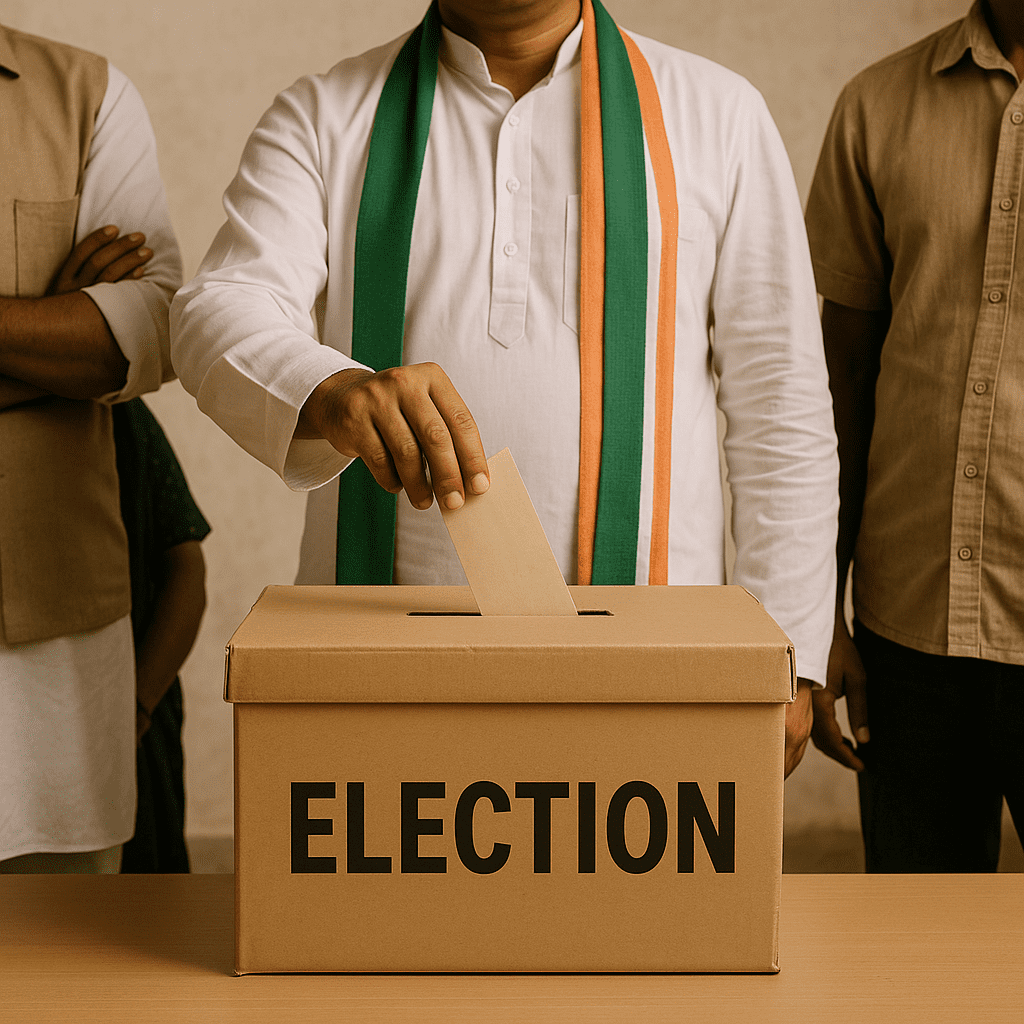Romantic love has been billed as the ultimate fulfillment, but neuroscience tells a different story: it hijacks our brains like a powerful drug. Modern brain imaging finds that gazing at a beloved floods the reward centers – the same dopamine-rich areas (ventral tegmental area and caudate nucleus) that light up under cocaine or alcohol. In the first flush of passion, cortisol and norepinephrine surge, hearts pound and palms sweat, while serotonin levels plunge – a cocktail of chemicals that produces obsession and anxiety. Scientists describe this state bluntly: a naturally evolved addiction. In short, falling in love feels like being high – and, like a drug, it can make us blind, euphoric, and dangerously dependent.
- Dopamine (Reward): Romantic desire floods the mesolimbic reward circuit with dopamine, producing euphoria. Brain scans show that thinking of one’s lover activates the nucleus accumbens and ventral tegmental area – literally the “cocaine centers” – sparking intense pleasure and craving.
- Cortisol & Serotonin (Obsession): Early-stage love feels like stress. Cortisol spikes as if the brain is in crisis, and serotonin drops, triggering the racing thoughts, sleepless nights and anxious obsession that define early infatuation.
- Oxytocin & Vasopressin (Attachment): Once a bond forms, oxytocin and vasopressin flood in, cementing attachment. These “cuddle hormones” create contentment and calm, deepening the emotional bond and making separation agony far more than metaphorical.
These chemical highs fuel romance’s mythic allure, but they also underlie its addictive pull. Fisher and colleagues note that early love produces all the hallmarks of addiction – euphoria, craving, tolerance, dependence, withdrawal and relapse. Lovers literally grow tolerant (needing more time or passion to feel the same “rush”) and experience withdrawal pangs when apart. Psychiatrists have catalogued this overlap: people passionately in love or freshly rejected often show DSM-5 addiction symptoms (intense craving, mood swings, tolerance, emotional dependence, and even relapse). Some clinical writers even argue that romance functions as a behavioral addiction – a “positive addiction” when reciprocated, but a negative, pathological one when love is unrequited. In this sense, romance is marketed as a cure-all, yet it behaves more like a trap: an emotional dope that hijacks identity and judgment.
When Love Turns to Need: Romantic Addiction
Because love co-opts the brain’s reward system, it warps our behavior. Anyone who has been “blinded” by a crush can attest that logic fades when in the throes of passion. One review bluntly suggests that romantic love can become pathological, with sufferers surrendering self-control for the love-‘fix’. Clinical descriptions of “love addiction” depict an incessant need for the other – an overwhelming obsession akin to substance dependence. In such states, people abandon interests, sacrifice sleep, work, even their social life to chase love’s high. The result is psychological bondage: identity blurs into the lover’s, boundaries dissolve, and a maladaptive craving rules the psyche.
Several key traits link love to addiction:
- Craving and Euphoria: Early love brings dizzying happiness and an urge to be with the loved one constantly. As Fisher et al. note, intense romantic love “engage[s] regions of the brain’s reward system”. Lovers report a drug-like high when with (or even thinking of) their beloved.
- Tolerance: Over time, the original rush often requires more – more date nights, more gestures – to maintain. Partners needing increasing attention mirror how addicts seek larger doses.
- Withdrawal: Separation or rejection can induce profound withdrawal. Patients have described classic withdrawal symptoms: protest outbursts, crying spells, insomnia or hypersomnia, appetite changes, anxiety and irritability – symptoms almost identical to coming off amphetamines or alcohol.
- Relapse: After a breakup, many “shoot their shot” again and again, unable to let go. Relapse into old patterns (pining, stalking social media, returning to a toxic partner) is as common in heartache as in drug abuse.
Addiction among addictions: In fact, clinical research estimates that pathological romantic obsession (sometimes called “erotic target location error” or “erotomania” when delusional) affects a nontrivial minority. One review notes that up to ~3% of the general population exhibit classic love addiction patterns (and as many as 25% of some student samples). These individuals often describe the loved one as “indispensable” – a dependency strong enough to debilitate. Yet because society lionizes passion, this condition remains unofficial. DSM-5 does not list “love addiction” as a diagnosis, but experts stress that the science of addiction fits love’s extremes. As one treatment review puts it: “even though love addiction is not recognized by DSM-5 as a specific diagnosis, there is enough literature… to support its characterization as an independent mental disorder.”. In other words, psychiatrists increasingly regard toxic romance as a real clinical phenomenon, even if love remains a socially acceptable “drug.”
Heartbreak and Withdrawal: The Agony After Love
If love is the hit, heartbreak is the comedown. The fallout of lost or unrequited love can be devastatingly real. Neuroscientists and clinicians report that heartbreak activates many of the same pain and craving circuits as drug withdrawal. Rejection can bring a suite of symptoms – stress, rage, depression, and even violence. Fisher’s team notes that a spurned lover often experiences stress-induced illness (high blood pressure, heart trouble, immune suppression) and in “extreme cases… suicide and/or homicide”. Indeed, broken-hearted people literally have died of heartbreak. Published cases describe ex-lovers suffering fatal heart attacks or strokes due to profound grief and stress.
Modern studies quantify this psychic injury: young adults frequently plunge into clinical depression after a breakup. In one experiment comparing recently heartbroken students to those still coupled, the heartbreak group had significantly higher depression scores (p=0.001); about 26.8% of them reported symptoms in the mild-to-severe depression range. Another survey found that nearly a third of young people with a recent major breakup had suicidal ideation – far above baseline. In a Peruvian medical-student sample, a romantic breakup was associated with a 1.49-fold higher rate of suicidal thoughts (34.3% of the whole sample reported such thoughts). Heartbreak seems to be a potent risk factor: it can trigger anxiety, insomnia, intrusive rumination, and sometimes impel people toward the darkest actions. As researchers warn, “the breakdown of romantic relationships…can cause physical and mental problems, such as suicidal thoughts and behaviors.”
- Crushing Depression: Breakups are profoundly upsetting events. Survivors report intense sadness, insomnia or hypersomnia, loss of appetite or compulsive eating, and anxiety. About one in four people enduring a recent breakup meet criteria for clinical depression. Women tend to suffer especially (possibly due to greater rumination), but men are not immune.
- Anxiety and Self-Doubt: Those rejected often obsessively question what they did wrong, cycle through fear and anger, and can even develop PTSD-like symptoms. Research notes higher cortisol and terror at early loss, with symptoms akin to anxiety disorders.
- Violent Fallout: The consequences aren’t always inward. Fisher’s data show that the craving+withdrawal state of a scorned lover “most likely…contribute[s] to the high worldwide incidence of crimes of passion.” Indeed, crimes of jealousy and revenge are common globally; classic criminology studies long ago found that jealousy motives underlie ~20–30% of homicides.
- Obsessive Pursuit: Some spurned lovers become stalkers, exhibiting the compulsive, impulsive behaviors of addicts craving a fix. They track every move, follow obsessively, even approach a stranger just to feel attention. These extreme behaviors once might have been called “mad love,” but psychiatry now recognizes them as addiction-like patterns.
Romance sells itself as bliss, but its withdrawal can be agony. Clinical case notes are grim: “broken-hearted lovers even die” of depression-induced heart attacks; others spiral into substance abuse or violence. It is as if love’s venom lurks in its own antidote.
Cultural Reveries vs. Romantic Realities
All this science lurks behind the rosy myths society peddles. Our culture glorifies romance as life’s greatest prize, yet often ignores the collateral damage. The modern “soulmate” narrative is historically new. As social commentators note, most of human history did not treat love as the foundation of marriage. In ancient Rome, for example, unions were arranged to secure alliances and heirs – affection was expected to blossom after marriage, not serve as its starting point. Only in the last few centuries did Western society experiment with “love marriage,” hoping companionship and passion would solve all human yearning.
Neuroscience suggests this experiment carries hidden risks. When love grips the brain, neural pathways of judgment go offline: as Harvard researchers put it, love literally “deactivates the neural pathway responsible for negative emotions, such as fear and social judgment.”. In love’s haze, lovers become insensitive to red flags – thus Shakespeare’s old advice “love is blind.” We willingly cede reason to our amygdala and nucleus accumbens. But when the infatuation fades, the delusion shatters in painful truths.
Meanwhile, fairy tales and rom-coms never show the comedown, so people enter relationships believing only in deliverance. Yet critics ask: what happens when “happily ever after” falls apart? If love is supposed to be everything, what holds a life together when love fades? History and data provide harsh answers: divorce rates soared once love became marriage’s foundation, and heartbreak has become a public health issue. By one estimate, leaving a long-term relationship makes young people unusually vulnerable to depression and even suicide. The emotional stakes of romance are colossal, and often destructive.
Love Addiction in the Clinic
Perhaps most unsettling is that even clinical psychology is grappling with these truths. In textbooks and reviews, “love addiction” is regularly invoked as a legitimate condition. It goes by many names – pathological love, obsessive love disorder, erotomania, affectional dependence – but the core is the same: a harmful pattern of romantic obsession. Reviews point out that no official diagnostic code exists, yet the syndrome meets the criteria of behavioral addiction. Patients describe exactly the dynamic science predicts: overwhelming desire for another, panic at the thought of losing them, and loss of control over feelings. One recent review defines love addiction as “an incessant need for the presence of the other indispensable for one’s life,” coupled with dysfunctional behaviors and recurrent fears of abandonment. Group therapy sessions for love addiction (echoing substance programs) have shown promise in aligning reward systems and rebuilding self-identity.
Still, many clinicians caution against pathologizing normal love. They acknowledge love can be positive and natural (indeed 147 of 166 sampled cultures report intense romantic love as universal). But they also note its dark side is real: heartbreak can trigger clinical depression, suicide, homicide, and other crimes of passion. In practice, therapists now see cases of erotic jealousy and grief so severe that they rival bipolar episodes or addictive relapses. The psychiatric literature is clear: when romance goes off the rails, it causes genuine psychic injury.
Conclusion: Beyond the Hype
The evidence is unambiguous and unsettling. Romantic love drives our brain’s drug circuits; it can make us irrationally joyful or irrationally wrecked. Helen Fisher and others conclude that love – “powerfully negative addiction” as well as a positive force – evolved to bind us, but its withdrawal is raw and dangerous. Even though science lauds love’s bonding function, it also warns that “feelings of intense romantic love” share reward pathways with the most potent chemical addictions.
Yet society still sells the fairy tale: find your perfect partner and be forever happy. In reality, many find only a slow-burning dependency and wounded self. As one clinician observes, addicted lovers sacrifice their own growth and well-being, and can suffer as real addiction victims do. The romantic myth promises wholeness, but too often delivers the opposite: bondage, obsession, and invisible scars on the psyche.
Ultimately, perhaps love is indeed both the most overrated emotion and the most underrated dope. It is worshipped as life’s fulfillment even as it hijacks our neurochemistry and, in heartbreak’s aftermath, brings genuine pain. By facing the science of love addiction and heartbreak, we may learn to approach romance more soberly – savoring its highs without losing ourselves. Until then, the powerful paradox of love remains: our brains crave it like a drug, yet our hearts can pay a tragic price for the dependence.
pmc.ncbi.nlm.nih.govhms.harvard.edu
hms.harvard.edupmc.ncbi.nlm.nih.gov
pmc.ncbi.nlm.nih.govhms.harvard.edu
pmc.ncbi.nlm.nih.govpmc.ncbi.nlm.nih.gov
pmc.ncbi.nlm.nih.govelsevier.es
pmc.ncbi.nlm.nih.govelsevier.es
pmc.ncbi.nlm.nih.govpmc.ncbi.nlm.nih.gov
mc.ncbi.nlm.nih.govpmc.ncbi.nlm.nih.gov



